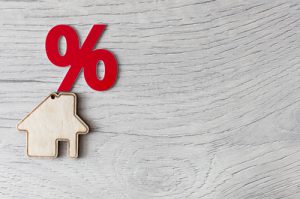Inflation perked up, yet interest rates improved from key levels. Let's walk through the big financial news of last week as we approach this Wednesday's Fed Meeting.

Tale Of Two Inflations
Last Wednesday, the Consumer Price Index (CPI) for August increased by 0.6% for the month, lifting the annual rate to 3.7%, both of which were higher than expected. The month-over-month rise was the highest this year. The main culprit? Energy. Oil soared by nearly 11% for the month as a barrel has gone from $65 to $89 between June and September.
The Core CPI, which excludes food and energy and is more closely watched by the Federal Reserve, did decline to 4.3% from 4.7% year-over-year and appears to be trending in the right direction...lower.
The bond market and interest rates must have liked the decline in Core CPI as the post-news reaction watched the 10-year Note yield decline from 4.35% down to 4.25%.
Oil Hits 2023 Highs
As mentioned, oil prices were the main reason for inflation rising in August. Prices have continued their rise this month with a barrel hitting 2023 highs last week. Should it continue, we should expect the September CPI to also show headline inflation remaining high and confirm that inflation bottomed this June.
The Blackout Period Continues
With the Fed Meeting approaching this coming week, Federal Reserve officials do not make any speeches or comments on monetary policy. This quiet or calm before the storm helped lower interest rate volatility and kept rates from moving above 2023 peaks. All this will change next week.
As of this moment, Fed Fund Futures, which price the probability of interest rate moves are showing a nearly 100% chance of no rate hike at this Meeting.
Japan Interest Rates Climbing Too
Interest rates around the globe have moved higher and now Japan has joined the club. With inflation in the region hitting 40-year highs, their Central Bank has allowed their 10-year government bond to touch .70%, the highest level since 2014. It appears their central bank could allow this interest rate to rise further. If it does, it could apply upward pressure on all global yields, including our 10-year Note.
Bottom line: Interest rates remain near the highest levels of the year and there is a threat of headline inflation reaccelerating, due to energy prices. This will be important to watch in the months ahead because if inflation moves higher, it may force the Fed to hike rates further.





 Starting Tuesday, September 5th, until September 20th, we are offering an exclusive 20 basis points (BPS) discount on every FHA, VA, and USDA loan submitted to us. This is our way of saying thank you for two decades of unwavering trust in our services.
Starting Tuesday, September 5th, until September 20th, we are offering an exclusive 20 basis points (BPS) discount on every FHA, VA, and USDA loan submitted to us. This is our way of saying thank you for two decades of unwavering trust in our services.





